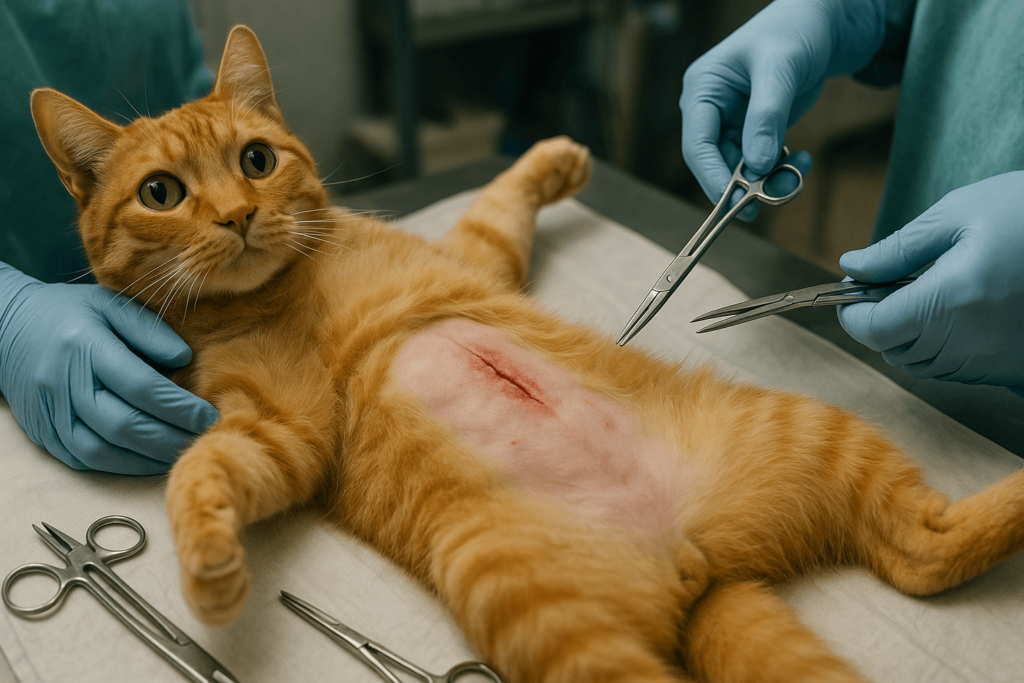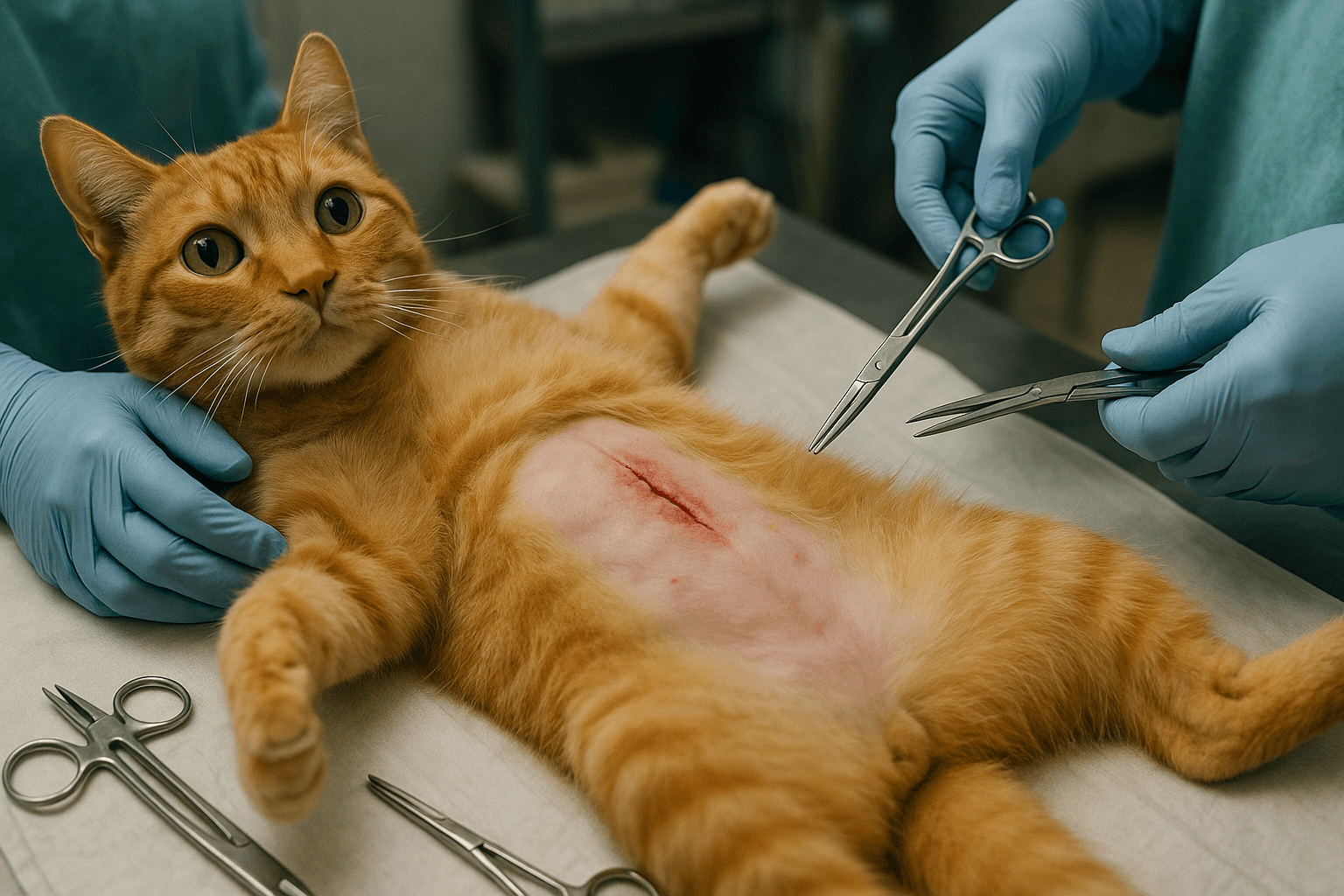Risks of Spaying a Cat: What Every Owner Needs to Know
Spaying your cat is one of the most responsible decisions you can make as a pet owner. Beyond preventing unwanted litters, it reduces the risk of serious diseases and curbs behavioral issues tied to heat cycles. But like any surgical procedure, spaying carries potential risks — and understanding them is key to making an informed, confident choice. This guide explores the real, evidence-based risks of feline spaying, how to minimize them, and why the long-term benefits far outweigh the short-term concerns.
Understanding the Surgical Process and Immediate Risks
Spaying — or ovariohysterectomy — involves the removal of a female cat’s ovaries and uterus under general anesthesia. While routine, it’s still major surgery, and immediate complications, though rare, can occur.
Anesthesia reactions can happen in any animal, with risks increasing in very young, elderly, or medically compromised cats.
Bleeding during or after surgery is uncommon with skilled veterinarians but remains a potential risk, especially if post-op activity isn’t restricted.
Infection at the incision site may develop if the cat licks the wound or if sterile protocols aren’t followed.
Pain and discomfort are normal in the first 24–48 hours, but inadequate pain management can delay healing.
Delayed healing can occur in overweight cats or those with underlying conditions like diabetes or immune disorders.
These risks are minimized with proper pre-op screening, experienced veterinary care, and attentive post-op monitoring. Most cats recover smoothly with no complications.

Long-Term Health Risks Associated with Early or Late Spaying
The timing of spaying can influence long-term health outcomes. While early spaying is widely recommended, it’s not without potential trade-offs.
Increased risk of urinary incontinence has been observed in some spayed females, particularly when spayed before 12 weeks of age, though the overall incidence remains low.
Higher likelihood of weight gain is common after spaying due to reduced metabolic rate and hormonal shifts, making diet and activity management essential.
Potential for orthopedic issues — some studies suggest early spaying (before 6 months) may slightly increase the risk of cranial cruciate ligament tears due to altered bone growth.
Development of hypothyroidism has been noted in a small subset of spayed cats, though it’s rare and often manageable with medication.
Increased risk of certain cancers — such as osteosarcoma — has been observed in some breeds spayed very early, though the data remains inconclusive and breed-specific.
These risks are not universal. Many cats spayed as early as 8 weeks live long, healthy lives. The key is discussing your cat’s breed, size, and health history with your vet to determine the optimal timing.
Check this guide 👉Can a Spayed Cat Get Pyometra? Best 7 Expert Tips!
Check this guide 👉Spayed vs Unspayed Cat: Best 7 Expert Tips!
Check this guide 👉Do Cats Gain Weight After Being Spayed? Best 7 Expert Tips!
| Short-Term Risks | Long-Term Risks |
|---|---|
| Anesthesia complications | Weight gain due to metabolic slowdown |
| Post-operative bleeding | Increased risk of urinary incontinence |
| Infection at surgical site | Potential orthopedic changes from early spaying |
| Delayed wound healing | Slight increase in hypothyroidism risk |
| Pain mismanagement | Rare association with certain cancers |
How to Minimize Risks Before, During, and After Surgery
Preparation and aftercare are your most powerful tools in reducing complications. Proactive steps make a measurable difference in your cat’s recovery.
Choose a reputable veterinarian with experience in feline surgeries and modern anesthetic protocols — ask about monitoring equipment like ECG and pulse oximetry.
Schedule pre-anesthetic blood work to detect hidden conditions like kidney or liver issues that could affect anesthesia safety.
Fast your cat appropriately — typically 8–12 hours before surgery — to reduce the risk of aspiration during anesthesia.
Use an Elizabethan collar immediately after surgery to prevent licking or biting the incision, even if your cat seems calm.
Limit activity for 7–10 days — no jumping, climbing, or rough play — to ensure the incision heals properly without strain.
Following these steps dramatically lowers the chance of complications and supports a smoother, faster recovery.
The Hidden Risks of NOT Spaying Your Cat
While we focus on surgical risks, it’s critical to weigh them against the far more common and serious dangers of leaving your cat intact.
Pyometra, a life-threatening uterine infection, affects up to 25% of unspayed females by age 10 and requires emergency surgery.
Mammary cancer is 7 times more likely in unspayed cats, especially if they’ve had multiple heat cycles — and 90% of these tumors are malignant.
Unplanned pregnancies lead to overpopulation, abandonment, and euthanasia — over 3 million cats are killed annually in U.S. shelters due to overcrowding.
Roaming behavior increases dramatically during heat cycles, exposing cats to traffic, fights, and infectious diseases like FIV and FeLV.
Behavioral stress from repeated heat cycles can cause excessive vocalization, aggression, and house soiling — all of which strain the human-cat bond.
The risks of not spaying are not hypothetical — they’re documented, frequent, and often fatal. Spaying isn’t just about preventing kittens; it’s about preventing suffering.
Myths About Spaying That Could Harm Your Cat
Misinformation leads to poor decisions. Let’s debunk the most dangerous myths surrounding feline spaying.
Myth: “Spaying makes cats lazy and fat.”
Weight gain is linked to overfeeding and lack of activity — not the surgery itself. A balanced diet and playtime prevent obesity.Myth: “Cats should have one litter before being spayed.”
There is zero medical benefit to this. In fact, spaying before the first heat reduces mammary cancer risk by up to 91%.Myth: “Spaying changes your cat’s personality.”
Your cat’s core temperament remains unchanged. Only behaviors tied to hormones — like yowling or spraying — are reduced.Myth: “It’s too expensive.”
Many shelters and clinics offer low-cost spay programs. The cost of treating pyometra or cancer is exponentially higher.Myth: “My cat is too old.”
Healthy senior cats can safely be spayed. Age alone is not a contraindication — health status is.
Dispelling these myths empowers you to act in your cat’s best interest, not out of fear or outdated tradition.
When to Consider Delaying Spaying — And When Not To
While early spaying (as young as 8–12 weeks) is safe and recommended by the AVMA, there are rare cases where timing should be adjusted.
Large or giant breed cats — such as Maine Coons — may benefit from waiting until 6–9 months to allow full skeletal development.
Cats with congenital health conditions — like heart defects or severe respiratory issues — may need stabilization before surgery.
Cats recovering from illness or trauma — surgery should be postponed until full recovery to reduce stress on the immune system.
Breeding-quality show cats — though rare — may be spayed later, but only under strict ethical guidelines and with full awareness of risks.
Stray or feral cats — should be spayed as soon as safely possible to prevent reproduction and reduce population pressure.
Always consult your vet. There’s no one-size-fits-all timeline — your cat’s individual needs come first.
Post-Spay Care: What to Watch For and When to Call the Vet
Your cat’s recovery is just as important as the surgery itself. Vigilance saves lives.
Lethargy lasting beyond 48 hours may indicate infection, pain, or internal complications.
Swelling, redness, or discharge at the incision site requires immediate veterinary attention.
Refusal to eat for more than 24 hours can signal nausea, pain, or metabolic imbalance.
Excessive licking or biting at the incision despite using a cone suggests discomfort or anxiety.
Difficulty urinating or defecating could point to internal inflammation or stress-induced constipation.
If you notice any of these signs, don’t wait. Contact your vet immediately. Early intervention prevents minor issues from becoming emergencies.
FAQ: Risks of Spaying a Cat
Is it safe to spay a cat as young as 8 weeks?
Yes. Pediatric spaying is endorsed by the American Veterinary Medical Association and is safe when performed by experienced professionals using appropriate anesthetic protocols.
Will my cat gain weight after being spayed?
Not necessarily. Weight gain occurs due to overfeeding and reduced activity. Switch to a lower-calorie diet and increase playtime to maintain a healthy weight.
How long does recovery take after spaying?
Most cats recover fully within 7–10 days. Keep them indoors, limit activity, and monitor the incision daily.
Can spaying cause depression in cats?
No. Cats don’t experience depression the way humans do. Any temporary lethargy is due to anesthesia or pain, not emotional distress.
What if my cat is in heat when I schedule the spay?
Spaying during heat is possible but carries slightly higher risks due to increased blood flow. Your vet may recommend waiting or proceed with extra precautions.
Embrace the Balance: Weighing Risk Against Reward
Spaying your cat isn’t about eliminating risk — it’s about making a thoughtful, informed choice that prioritizes long-term health over short-term fears. Yes, there are risks. But the risks of not spaying — cancer, infection, overpopulation, and suffering — are far greater, far more common, and far more devastating. With modern veterinary care, proper pre-op screening, and attentive aftercare, the procedure is safer than ever. Your cat doesn’t need to experience heat cycles. They don’t need to be pregnant.
They don’t need to fight for survival in a world already overflowing with homeless cats. What they need is you — to choose wisely, to act with compassion, and to give them the longest, healthiest life possible. Spaying isn’t just a procedure. It’s a promise. And it’s one your cat will thank you for — every quiet purr, every gentle head-bump, every peaceful nap in your lap.
Canned Pumpkin for Cat Diarrhea: Best 7 Expert Tips! Natural remedy to firm stools, soothe upset bellies, and support gut health safely.
Can a Cat Give You Scabies? Best 7 Expert Tips! Discover the truth about feline mites, human skin risks, and how to protect yourself—without panic.
Cat Flea vs Human Flea: Best 7 Expert Tips! Discover the truth about bites, species, and how to eliminate infestations for good.
Weird Cat Behaviors: Best 7 Expert Tips! Discover why cats do strange things—and how to understand, not punish, their instincts for a happier home.





